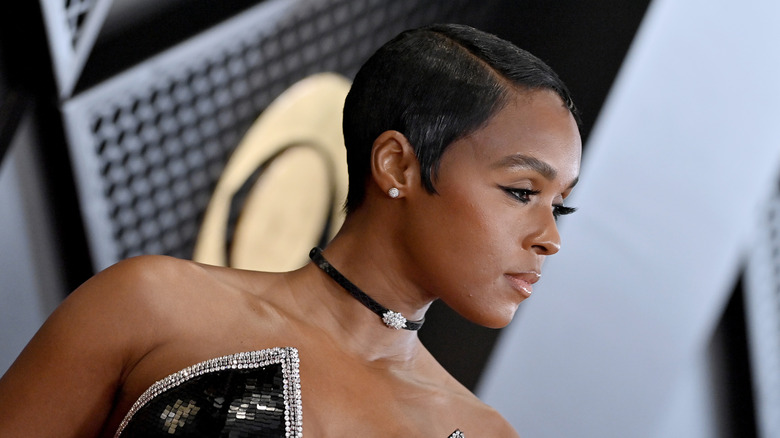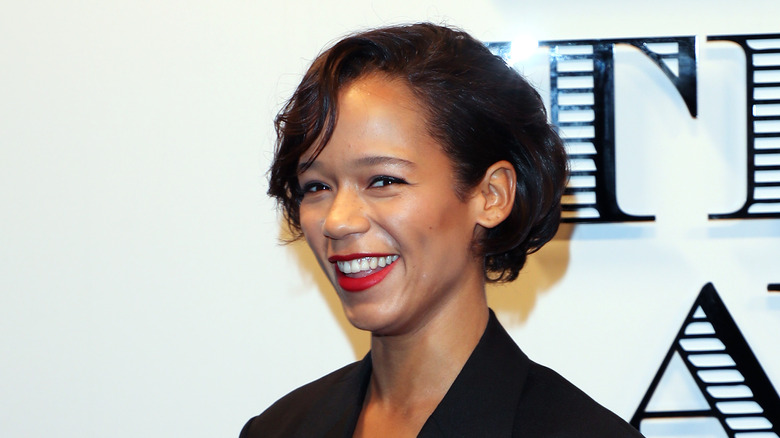The Easy Trick To Determine If Short Hair Is For You
If you've been keeping up with trend forecasts, then you already know that short hair will be huge in 2024. While that's all well and good for those who usually stick to bobs, pixies, and any cut that's above the shoulders, this information can feel a little scary to those who typically keep their hair long but still want to be en vogue. Even though hair does grow back, it's not always easy for some people to let go of their lengthy locks.
"Long hair, for whatever reason, seems to simultaneously represent the innocence of childhood and the allure of adult femininity," psychotherapist Heather Garbutt tells Stylist. "When women have short hair in this context, it's a statement of independence, a taking on of the hunter role — traditionally considered to be a more 'masculine' and dynamic identity — rather than the more 'feminine' (as in, empathic and caring) gatherer mantle. This doesn't mean that having long hair ties us into old tradition, however."
But despite what short hair conveys — empowerment and fresh starts – if you're new to short 'dos, you probably have one question on your mind: Can I pull it off? Luckily for you, the 2.25 rule can answer that for you.
How to use the 2.25 rule
Created by the celebrity hairstylist John Frieda, the 2.25 rule is essentially understanding your facial measurements and how they play a role in finding your perfect short haircut. "It's all angles," explains Giles Robinson, senior stylist at Salons UK to Cosmopolitan UK. "John studied faces and saw that the angle of the jaw bone determined whether or not someone would look best with short hair or long hair".
To use this method yourself, all you need is a ruler and a pencil. While holding the pencil horizontally under your chin, place the ruler vertically under your ear so you're creating an L-shape with the two items. The point at which the pencil and ruler come together is your measurement. If that number is 2.25 inches or fewer, then you have a face for short hair. If it's longer than 2.25 inches, it's best to stick to longer locks — if you take the rule to heart.
Does it always work?
As much as the rule makes sense, it's only taking into consideration one feature: chin to ear length. Because of this, it's something that not every stylist out there is buying. "I never use 'rules' like this when I cut or style hair," hairstylist Jen Atkin tells Elle. "There's much more to a great haircut: hair type, texture, density, facial features, body frame, and personal style. Narrowing it down to the 2.25 rule seems too simplistic... anyone can look great with long or short hair if it's executed well and styled to suit features and style."
Although hairstylist Kerrie Urban agrees there's something to the rule, she tells Allure, "It's a good rule, but there are always exceptions," adding that thin hair, for example, on someone with a longer face "will actually look fuller if it's kept on the shorter side." So what does this tell us? There are no hard and fast rules in the world of hair.
If you want to stick to the 2.25 rule when considering whether you can rock a short haircut because that seems like a safe bet, then reach for a pencil and ruler. If you're someone who eschews anything that's even remotely rule-related because you strongly believe rules were made for everyone else, then you know what you need to do: march into your favorite salon and go for one of those short hair trends you've been coveting. You'll be so happy you did.


